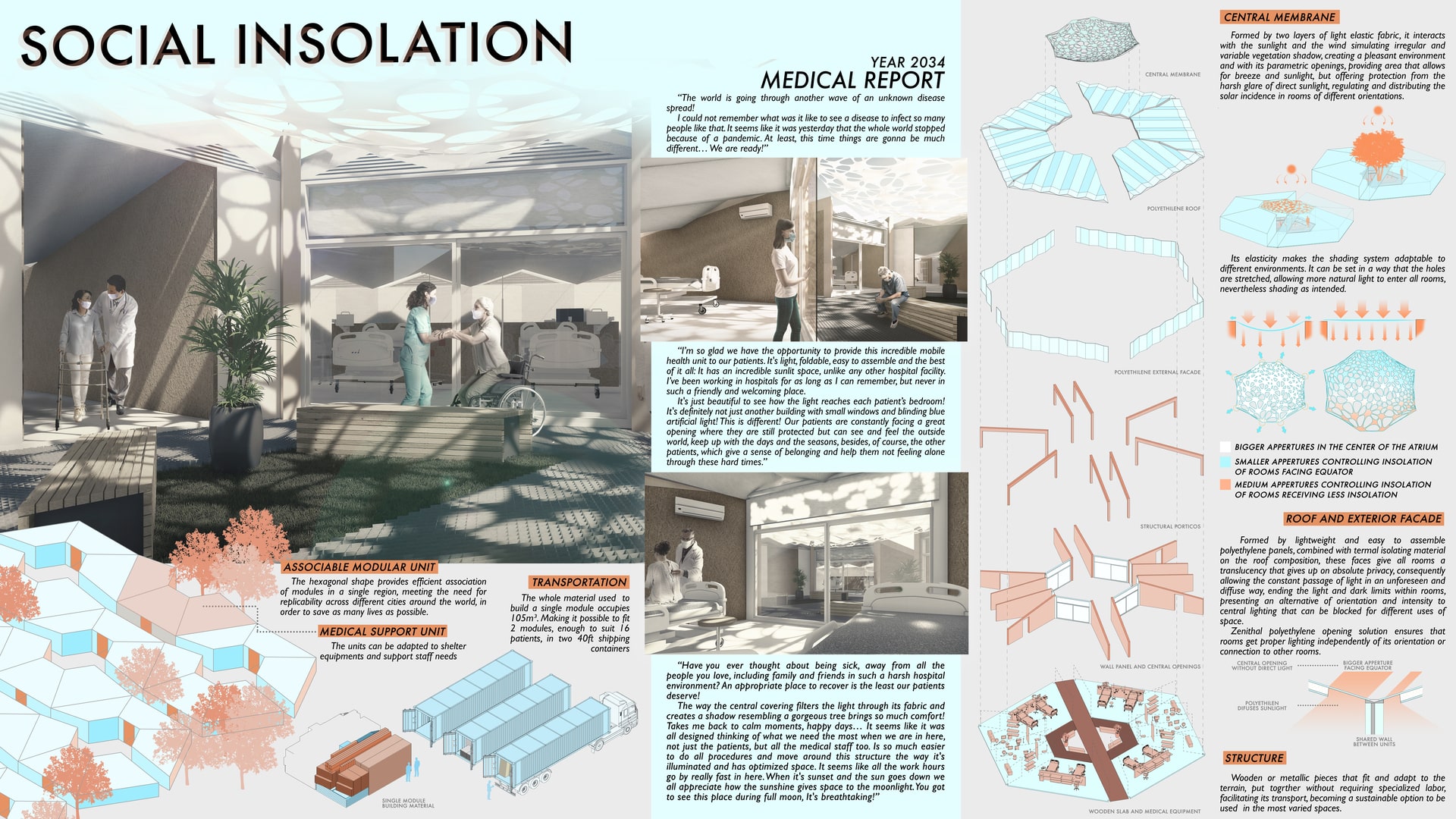Project Description
The way the world and its large cities add up inhabitants every day in enormous concentration together with their fast development, can quickly give rise to many problems and complications that require planning to solve and provide quality of life to its population. Be prepared to deal with the hospitalization and isolation of patients during an epidemic crisis is one of these difficulties. The question that has lead the project was; How can we create a medical isolation environment without disconnecting it from the outside world, making it more humane and pleasant for the patient? It is not a novelty that light can affect humans' physiological and psychological aspects. It allows us to perceive space, forms, textures, colors and as a consequence, architecture itself, thus it should never be neglected when creating a space. In recent years, within hospital environments, there has been an extreme artificialization of the means of lighting and ventilation inside patients' stay environments. In favor of the sterility, the internal environment has been severely disconnected from the external, sacrificing the presence of humanity in these buildings. The way light goes into an environment affects its airflow and thermal qualities, allowing natural resources to satisfy these needs favors energy efficiency in the whole built environment, reducing energy consumption with artificial lighting, responsible for a significant portion of it. The presented project seeks to make the period of medical isolation a comfortable moment in a welcoming environment instead of the usual cold environment without any contact with the nature and outside world, damaging the patient's health, which is the reality in most contemporary hospitals. The construction of the module in a hexagonal structure creates a central void, towards which wide openings are facing, placing the patient in visual contact with the other hospitalized, thus participating in the treatment in a collective way, humanizing their stay, promoting a sense of community when seeing himself in other patients, like a mirror. This empty space sets up the environment by distributing the beds around it and creates an aquarium, where health professionals circulate and observe their patients in the most efficient way possible. It is also possible for the patient to observe the start of new days and seasons, with different solar cycles causing different sensations over time and climatic variations, giving back to the patient the feeling of being alive, being part of the world around him. The cover presented in the central courtyard is formed by two layers of light elastic fabric, which interacts with the sunlight and the wind simulating irregular and variable vegetation shadow, creating a pleasant environment and with its parametric openings, provide area that allows for breeze and sunlight, but offer protection from the harsh glare of direct sunlight, regulating and distributing the solar incidence in rooms of different orientations. The external facades, next to the translucent portion of the roof, have a translucency that gives up absolute privacy, which consequently allows the constant passage of light in an unforeseen and diffuse way, ending the light and dark limits within rooms, presenting an alternative of orientation and intensity to central lighting that can be blocked for different uses of space. Zenithal polyethylene opening solution ensures that rooms get proper lighting independently of its orientation or connection to other rooms. The hexagonal shape also provides an efficient association of modules in a single region, meeting the need for replicability across different cities around the world, in order to save as many lives as possible. Therefore, its structure can be easily assembled, using wooden or metallic pieces that fit and adapt to the terrain, being sealed by folding pieces of polypropylene plastic without requiring specialized labor, besides facilitating its transport, becoming a sustainable option to be used in the most varied spaces. The place we should be more exposed to health recovering, is where we are the most far apart from natural lighting. Natural lighting does not only bring health through physiological aspects, but also because it allows a sense of transparency with the external environment. People want to be connected to the rhythms and changes of the outside world, mostly when in such a stressful and uncertain time as an epidemic crisis.
